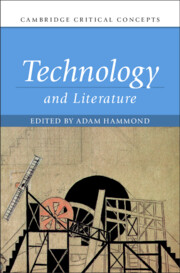Book contents
- Technology and Literature
- Cambridge Critical Concepts
- Technology and Literature
- Copyright page
- Contents
- Figures
- Contributors
- Timeline
- Introduction
- Part I Origins
- Part II Developments
- Chapter 8 Prostheses
- Chapter 9 Clocks
- Chapter 10 Compasses
- Chapter 11 Telescopes
- Chapter 12 Steam Engines
- Chapter 13 Wires
- Chapter 14 Cameras
- Chapter 15 Phonographs
- Chapter 16 Waves and Rays
- Chapter 17 The Bomb
- Chapter 18 Networks
- Part III Applications
- Index
Chapter 17 - The Bomb
from Part II - Developments
Published online by Cambridge University Press: 30 November 2023
- Technology and Literature
- Cambridge Critical Concepts
- Technology and Literature
- Copyright page
- Contents
- Figures
- Contributors
- Timeline
- Introduction
- Part I Origins
- Part II Developments
- Chapter 8 Prostheses
- Chapter 9 Clocks
- Chapter 10 Compasses
- Chapter 11 Telescopes
- Chapter 12 Steam Engines
- Chapter 13 Wires
- Chapter 14 Cameras
- Chapter 15 Phonographs
- Chapter 16 Waves and Rays
- Chapter 17 The Bomb
- Chapter 18 Networks
- Part III Applications
- Index
Summary
This chapter focuses on the atomic bomb as imagined, debated, and dissected in the fiction and criticism of the twentieth century. Long before its invention in the Manhattan Project, atomic fission was an obsessive object of speculation in fiction by writers such as H. G. Wells, Talbot Mundy, and Olaf Stapledon. Rejecting the notion that research was directed simply toward the development of clean sources of energy, such writers steered the public conversation toward the apocalyptic consequences of the employment of nuclear physics in the development of arms. Larabee focuses on how the threat of nuclear apocalypse impacted literary criticism’s sense of its social mission. Although she reads the movement known as “nuclear criticism” as a failure, she reads John Adams’s and Peter Sellars’s opera Doctor Atomic as exemplary of “new critical and creative forms” that might “bring the humanities and sciences together to address threats such as nuclear weapons.”
- Type
- Chapter
- Information
- Technology and Literature , pp. 325 - 343Publisher: Cambridge University PressPrint publication year: 2023

